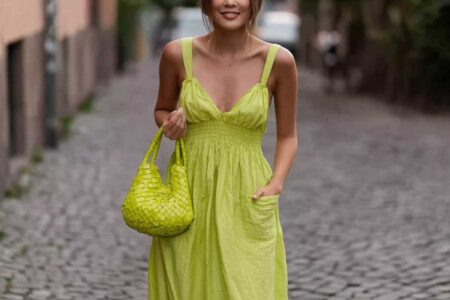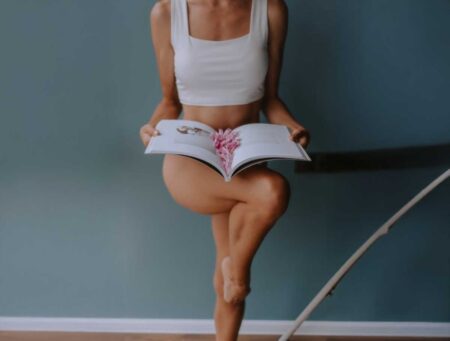In the past fifty years, Chinese fashion has had a considerable impact on Western fashion, with many designers from Dior and Christian Lacroix taking elements of Chinese design and adapting them to suit Western style. Perhaps one of the most famous exponents of the Chinese style was Yves St. Laurent, who found great inspiration over several collections.
In This Article
Let me tell you about how Chinese fashion took the world by storm! It’s like one day, we all woke up and realized how incredibly cool and fresh Chinese fashion is. You see, it all started with China’s rich heritage blending seamlessly with modern trends, creating this unique style that’s both traditional and cutting-edge.
Designers from China started showcasing their work on global stages, from Paris to New York, and let me tell you, they wowed everyone.
Social media played a huge part too—suddenly, influencers and fashionistas were rocking Chinese designs, making everyone want a piece of that style.
Plus, China’s fashion tech, think Alibaba and Shein, made it super easy and affordable for people all over the world to get their hands on the latest trends.
So, in a nutshell, a mix of cultural richness, innovation, and accessibility made Chinese fashion the global phenomenon it is today. Isn’t it fascinating how fashion can bring the world a little closer?
Chinese Influence on Fashion in the West
Perhaps the most copied and modified Chinese garment in the world of Western fashion, both in terms of Haute Couture and the high street, is the qipao or cheongsam. Traditionally a loose garment that covered the body from head to foot, it underwent a transformation in early 20th Century Shanghai, think Susie Wong, and became a figure-hugging dress quickly adopted by upper-class women in China at the time. The West was quick to assimilate the cheongsam into fashion, and with its mandarin collar and side split skirt, it was an enduring hit. One of the most beautiful examples of the qipao or cheongsam in couture was the John Galliano version for Christian Dior in the Fall 1997 collection, a stunning black silk creation with fur-lined cuffs and a pearl embroidered collar.
Other Chinese Dress Adopted by Fashion
Another traditional Chinese garment that was to be a massive influence on Western fashion is the hanfu dress. Often wrongly referred to as kimono, the hanfu dress is a silk robe with wide sleeves and a wide belted waist, traditionally the accepted dress during the time of the Han Dynasty. Western fashion modified the hanfu dress, and it quickly gained popularity as a robe or lingerie item. However, not all designers chose to keep this look for the boudoir.
Who can forget Jennifer Lopez in Versace‘s green hanfu inspired dress at the 42nd Grammy Awards in 2000? A stunning creation with its bamboo print and studded with citrines, this dress went on to become one of Versace’s most iconic, making the stamp of China on Western fashion much more than a passing fancy. The Mao Suit or Zhongshan Suit should also be mentioned. This simple garment was the Chinese equivalent of a Western business suit, though worn by both sexes during the communist era. Designers in the West have since shown it in many forms.
Lastly, don’t forget the motifs such as lotus flowers and cherry blossom, often used in embroidery or beadwork in Western fashion. Wide belts, traditionally part of hanfu dress, are now a great favorite as an accessory: the Mandarin collar or the fan, and many more. Chinese style is here to stay.
A Glance At Chinese Clothing
You don’t have to go to China for you to wear Chinese clothing. Admit it, Chinese fashion has lately been part of the latest trend nowadays. Chinese people are not just the only people who wear these apparel; you, too, can wear one!

Chinese clothing has varied by region and time, and its history has been recorded by the artifacts of the ancient Chinese people a long time ago. Chinese people wore tunics or long T-shirts. Females wore a long tunic that goes down to the ground with matching belts to create a curvature, while men wore smaller ones down to their knees. Sometimes they wore jackets over their tunics, especially during winter.
During the Sui Dynasty, which is about 500 AD, the Chinese emperor made a rule that all poor people had to wear blue or black clothes and only the rich society could wear colorful ones. It was in the Yuan Dynasty that the Mongols introduced cotton to China. At first, people hesitated to grow cotton mainly because the people in the silk industry wanted people to continuously buy silk.
The Chinese people ranked clothing as the topmost necessity of their lives. Then there follows food, shelter, and transportation. China is a country that has a long history of garments and ornaments, as proved by many archeological findings which showed the development of garments.
Generally, the characteristics of Chinese fashion can be summarized as bright colors, refined artisanship, and ornate details. The traditional clothing of the Chinese truly reveals the way of life they were used to live back then. Traditional Chinese clothing is full of native symbolism. This is one of the things that made traditional Chinese clothing apart. Everything from the pheasant feathers on the headgear of warriors up to the foot binding bandages on the soles of young Chinese girls has symbolism attached along with it.
In the year 1978, China began to modify and adapt the open door policy, and since then, fashion and fashion culture have hit the lives of the Chinese people.
As western culture influences, a sequence of fashionable western garments, such as the continuous wind, are changing the figure of Chinese clothing slowly.
At the end of the year 1970, aside from asking tailors and sewists to make their clothes, the Chinese people have begun to purchase ready-made clothes. Clothes processing firms developed rapidly along with the open door policy and reform. Taking instances of several types of popular apparel, it is not hard to see how the Chinese intertwine in the world of fashion and dressing.
Secrets of the Success of the China Fashion
The fact is, the fashion industry in China is very reactive. One little change, one little innovation, one new product from established brands, and the China fashion industry manages to turn these into thousands of possibilities and opportunities, not only for their industry but for the market as well. Such a response to consumers’ every possible need may be the primary cause of the success of the China fashion industry. The rapid movement of products through the wholesale drop ship method also plays a significant part in how the products reach consumers faster than other products do. However, there are three possible factors that can largely affect the success of the unparalleled consumer-goods provider of the world.

Firstly, the fashion apparel from China not only keeps up with the trend but even outrun it. More often than not, Chinese fashion starts the trend. From the wisp of an idea, the China manufacturing industry immediately turns it into tangible consumer goods and, thus, profits.
Aside from starting the trend, China also exhausts the trends that no other manufacturer could ever go further with it without China getting there first.
Coming up with cool and popular clothing is not enough. The China clothing manufacturers come up with different design variations, and every little thing that can be done to the product, China does it.
Moreover, despite this wide variety of products, there is no strict competition among the different variations, given that they’re all China-made. The battle is between several small soldiers against one big invincible giant, one force that fights without the possibility of getting divided. The absence of strict competition further strengthens the Chinese fashion industry even more.
Secondly, Chinese fashion appeals to every consumer’s hierarchy of needs and wants. If the clothing from brand manufacturers aim to answer to every need and to please, products delivered by the Chinese fashion industry aim to answer to every need, indulge every want and whim, and to excite.
China just takes it to a whole new level. For every need, there are several options that come in different price ranges, which allow prioritization of what should come first. And since the needed apparel are bought at cheaper prices, there is still space for the products that the consumers simply want. Because of the lower prices, people don’t have to choose between what they need and what they want, which is always a painful choice and sacrifice. Now, they can have both.
Thirdly, Chinese fashion leaves space for improvement. What is most baffling is why China-manufactured clothing still manages to tempt people despite worldwide releases of the sacrificed quality of some of their products.
It is also a well-known fact that the quality of these products cannot be compared to brand-manufactured products. However, this can be exactly one of the many reasons behind the market giant’s success.
How Chinese Fashion Brands Can Achieve Global Domination
Chinese fashion brands must stop impersonating counterparts and tell their own story while looking to expand globally. China produces and exports most of the world’s clothing brands, but most shoppers can not name a Chinese fashion brand.

Most of the world’s known fashion companies rely on Chinese consumers to pay their costs. On the other hand, China’s cheap clothing manufacturers have allowed luxury brands to produce high-quality goods at half the price.
Complacency and high cultural barriers are the reasons behind Chinese fashion designers’ absence from the global fashion stage. China’s domestic market is so massive that many Chinese fashion brands are not inspired or motivated to globalize.
The gap between “Made in China” and “Created in China” still hasn’t been reached over, and they lack storytelling. Although Chinese fashion brands have fantastic artistry and creativity, they lack storytelling. Helping the global audience to understand Chinese cultural craftsmanship and references should be the first step toward that achievement.
Chinese designers like Vera Wang and Alexander Wang, who studied or lived abroad, are using their legacy more successfully. They are closer to their roots, and they are helping to gain visibility for coming labels among a wider global audience. Chinese fashion brands maintained in China are still considered a niche globally.
They are still largely the fashion crowd’s preserve, yes, but the proliferation of online luxury shopping helps to gain visibility for coming Chinese fashion among a broader global audience.
Chinese designers are also acquiring substantial support from e-commerce sites. Chinese fashion brands such as Samuel Guì Yang, Xu Zhi, Robert Wun, DIDU, Pronounce, Staffonly, and others are rising in popularity among the new generation of shoppers.
Overview of Fashion in China
According to recent researches, China surpasses the US as the world’s largest fashion market in 2020. The Chinese fashion industry has been growing over the past decade, and currently, it is continuing to expand exponentially.
Luxury brands and other expensive clothes sold in various branded showrooms and upscale departmental stores could be seen in China. As the Chinese economy is growing at a healthy economic rate of more than 10%, the country’s middle class can now have immediate access to several foreign apparel brands and other domestic brands as well.
They have additional disposable income through which they want to buy trendy and fashionable clothes. This enhanced economic trend has resulted in the boom of the fashion industry in China. Customers in China are getting more sophisticated, and they wish to purchase extremely fashionable and higher quality clothes from their retailers. As a result of the economic boom, several fashion brands like Esprit, Glorious Sun, Tommy Hilfiger, Giordano, Guess, Baleno, and others have emerged. In this way, customers can access several multinational apparel brands under one roof without any hassles.
Different Chinese Fashion Styles

China is a country famed for producing a wide range of diverse and beautiful fashion styles to suit all occasions.
18 of the world’s top 20 fashion companies have a presence in China, including fast fashion and luxury fashion brands. Chinese fashion brands have yet to answer how to appeal to millennials because labor costs increase is a pressure factor to change or adjust their brand strategy.
China’s technology brands like Huawei or Alibaba have produced international heavyweights; a comparable Chinese fashion brand hasn’t appeared yet.
In China, it’s critical to understand that the demands of consumers are rapidly changing. Consumers born after 1980 have more and more influence by their western companions. These groups’ purchasing power, which nowadays consists of around 420 million people, is growing. Considering the millennials and the internet age, Chinese fashion brands have a great possibility and potential to uncover.
China’s Fashion: The Look from Overseas
China is a country famed for producing a wide range of diverse and beautiful fashion styles to suit all occasions.
Following the recent rapid development and achievements of China’s fashion industry, we are all curious how Chinese fashion is perceived to be by people from outside China (because no doubt, people, we are being watched). What they associate it with and generally, what it is about for them.
Discover the web’s finest treasure trove:
- Be inspired by simple and chic designs.
- Be surrounded by peace and joy.
- Be open to new cultures and customs.
- Embrace differences.
- Blend the beauty and tranquility of Chinese gifts into your lifestyle.
Blend the beauty and tranquility of Chinese clothing, Chinese dress, cheongsam, oriental clothing, etc., into your lifestyle.
Web’s Premier Chinese E-Shop Weareyugen.com! Striving to share with all around the world the love for Chinese culture and exotic goods. Here, you will find the web’s most exciting range of exotic Chinese clothing, as well as a huge variety of unique eastern arts, crafts, and accessories. Try ’em out, and let us know what you think!






